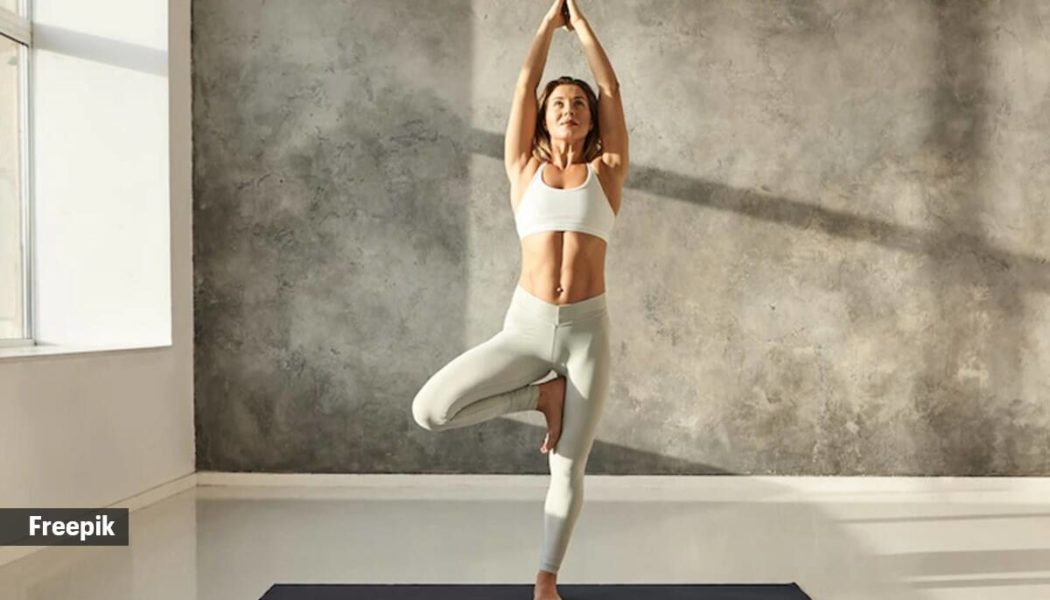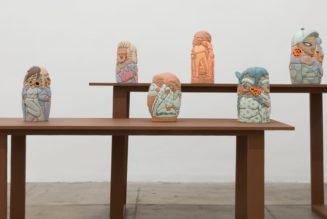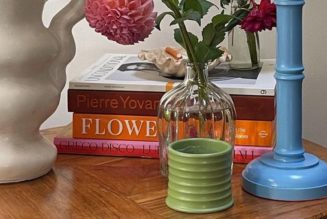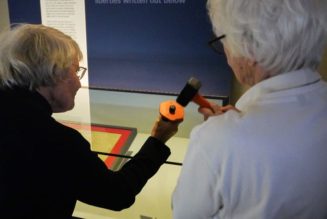Many studies have shown that apart from physical benefits, yoga may also help strengthen parts of the brain that play a key role in memory, attention, awareness, thought, and language. According to studies published in the Harvard Medical Review, using MRI scans and other brain imaging technology has shown that people who regularly do yoga had a thicker cerebral cortex (area of the brain responsible for information processing) and hippocampus (area of the brain involved in learning and memory) compared to nonpractitioners. These areas of the brain typically shrink as you age, but the older yoga practitioners showed less shrinkage than those who did no yoga.
Echoing the same, Sarvesh Shashi, founder, Sarva Yoga Studios wrote on Instagram, “Do you often forget.. Damn, we forgot to finish the sentence, it looks like we need some yoga practice. If you also get forgetful sometimes, here are three asanas that will help you improve your memory. Did you know that ancient text suggests that yoga can help in boosting your memory? Try these three simple asanas and breathing practices which will enhance your memory and absolutely improve it like never before.”
Utthita Hasta Padangusthasana
Utthita hasta padangusthasana, also known as extended hand-to-big-toe pose, is a standing asana that builds balance, improves concentration, and promotes a sense of stability.
Steps
* Start in Mountain Pose or Tadasana
* Take a point at eye level to focus. On exhalation, bring the weight on your left foot and lift your right knee up. Reach with your right hand for your big toe.
* Firm your left hip in and lengthen your spine, while keeping the shoulders blades firm with the chest open.
* As you inhale, extend your right leg out to the front, without compromising the length in spine.
* Stay for about 5 breaths. Then, as you inhale, bring your leg out to the right and stay for 5 more breaths.
* To come out of the pose, on an inhalation, bring your leg back to the centre. As you exhale, lower the foot back to the floor.
* Repeat on the other side.
While this pose has many benefits, Jiggyasa Gupta, a nutrition and fitness coach, noted that people with low blood pressure should refrain doing this pose as it may cause headache and dizziness. “Anyone with an injury on knee, ankle, hip, leg, shoulder or lower back must avoid — but if has to perform, must only do so under proper guidance.”
Bhramari Pranayama
Bhramari Pranayama originates from the Hindi word ‘bhramar’, which means bumble bee, and Pranayama is a breathing technique — so it can also be called ‘bee breath’. In this technique, the exhalation sound resembles the humming sound of a bee. It is very helpful for reducing fatigue and mental stress as well as quietening the mind.
Advertisement
Sharing the steps to perform this asana, Gupta said: “Close your eyes and inhale deeply through your nose. Now, while keeping a control on breathing, slowly exhale, making a deep and steady humming sound — like a bee buzz. It is a very simple breathing technique that takes about 10-15 minutes to complete and leaves us de-stressed and with a relaxed state of mind.
She continued: “Bhramari should not be practiced by pregnant or menstruating women and individuals with extremely high blood pressure, epilepsy, chest pain, or an active ear infection. ”
Vrikshasana
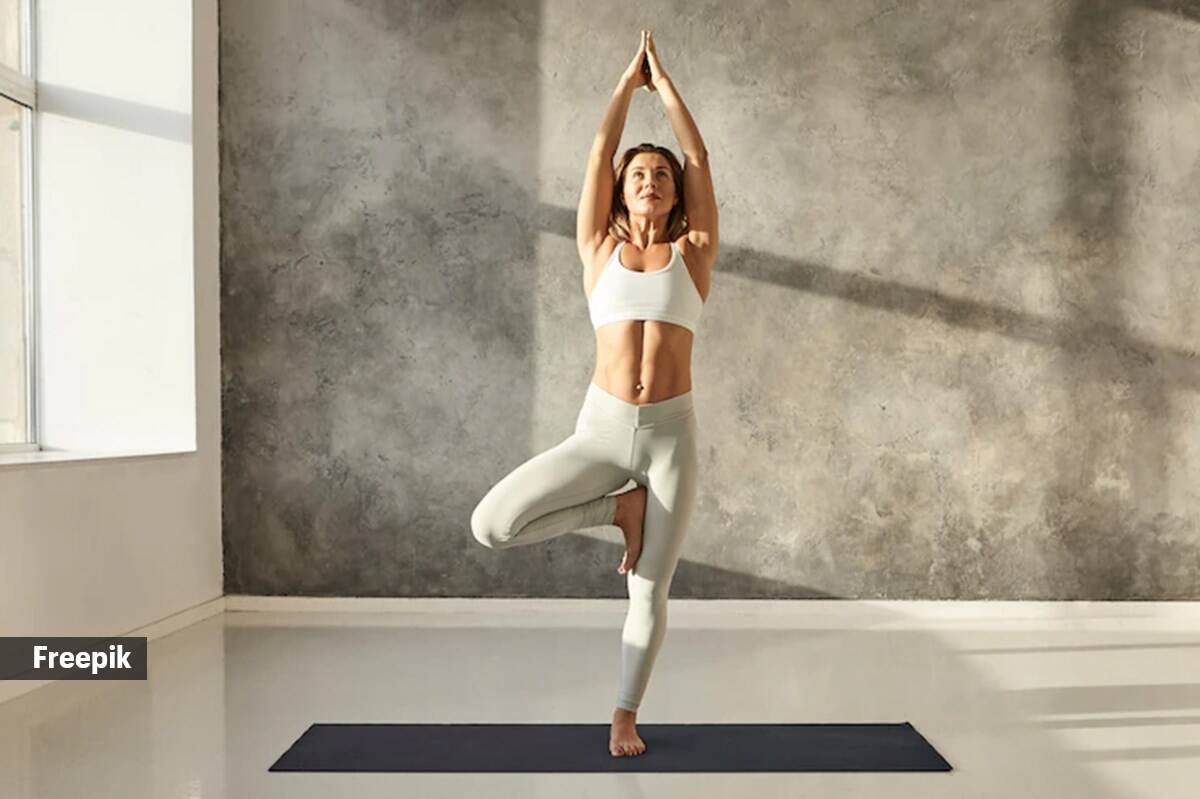 Vrikshasana is a great pose for women to practice during pregnancy as it eases pain and helps in smooth delivery. (Source: Freepik)
Vrikshasana is a great pose for women to practice during pregnancy as it eases pain and helps in smooth delivery. (Source: Freepik)
Vrikshasana is the combination of two Sanskrit words, vriksha meaning tree and asana meaning pose. It is grounding and centring posture that helps you align yourself and balance your energies. It also aids in improving balance and stability in the legs. However, it is advised to avoid this pose if you have injuries to your lower body, hamstrings or ankles. Vrikshasana is a great pose for women to practice during pregnancy as it eases pain and helps in smooth delivery.
Steps:
Advertisement
* Start in Mountain Pose or Tadasana
* Lift your right leg and balance on your left leg.
* Bend the right knee and place the right foot on the inner left thigh keeping the right foot’s toes facing down.
* At chest level, join your palms in prayer position. Raise your arms above your head, stretching your hands upward if you are an advanced practitioner.
* Hold the pose while taking a deep breath periodically.
* Separate your palms after lowering your arms to chest level.
* Return to a standing position by straightening your right leg.
* Repeat on the other side.
The expert advised people with migraine, insomnia, high or low blood pressure to avoid this pose. Additionally, anyone with an injury on knee, ankle, hip, leg, shoulder or lower back must perform using proper guidance.
📣 For more lifestyle news, follow us on Instagram | Twitter | Facebook and don’t miss out on the latest updates!
